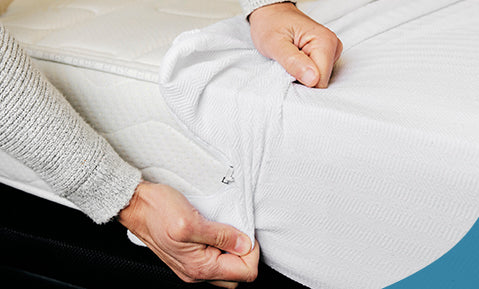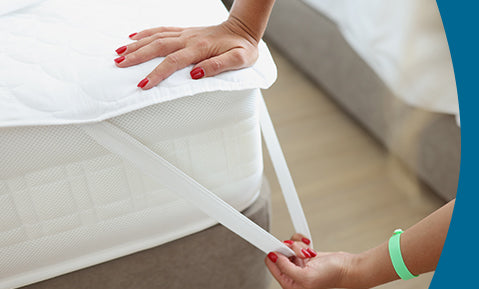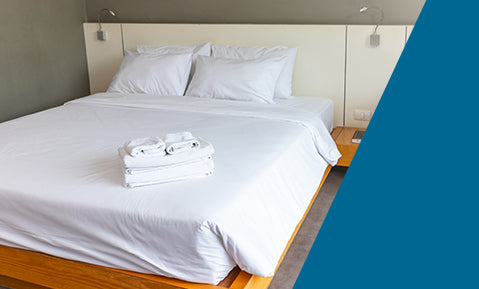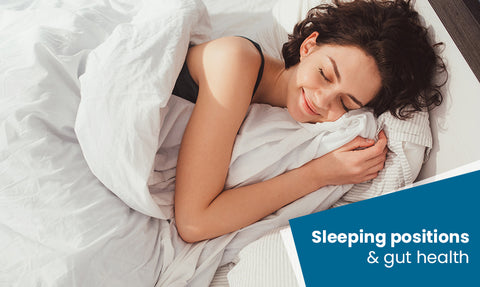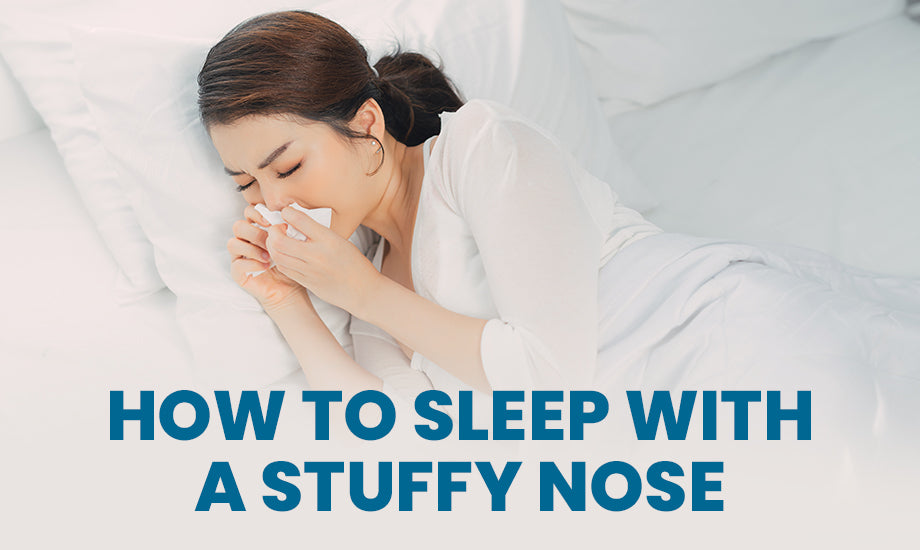
We often take breathing for granted, especially when our nose is completely functional and open, however, it takes having a congested nose, to realize that breathing is a great luxury. In this article, we will discuss about “How to Sleep with a Stuffy Nose.”
Stuffy Nose at Night
- Despite what is frequently believed, a stuffy nose is not just caused by a build-up of mucus. It can result from a swelling of the blood vessels surrounding your sinuses.
- Flu, cold, allergies, or a sinus infection are the main causes of this type of congestion. There may or may not be nasal discharge present.
- To put it another way, a stuffy nose, also called nasal congestion, is not necessarily accompanied by a runny nose, but a runny nose is also one of the common symptoms of nasal congestion, along with pain in the sinus, at times there may be an accumulation of mucus, and swelling of nasal tissue too.

CAUSES OF STUFFY NOSE
- ALLERGENS: The nose and sinus defenses, become overactive in response to allergens such as pollen, dust mites, and pet dander, wherefore, resulting in Sneezing, itching, and nasal congestion.
- SINUS INFECTION: Infection of the sinus cavity by bacteria, fungi, or viruses results in inflammation.
- Common symptoms include:
- Increased mucus production,
- Nasal congestion,
- Pain in the cheeks, forehead, or around the eyes,
- Headaches.
- The use of certain medications such as antihypertensive drugs, antiepileptics (drugs for seizures), and antidepressants can also cause congestion of the nose.
- Certain conditions such as Asthma related inflammation, lead to the formation of nasal polyps which are small growth that appeared in the nasal cavity, which lead to congestion of the nose and disturb breathing.
WHAT ARE SINUSES?
- In the skull, there is a network of cavities called the sinuses, they are lined by mucosa, a delicate pink tissue. The sinuses often contain no mucus other than a thin coating.
- Maxillary sinuses are located in your cheeks (the largest).
- Your frontal sinuses are positioned in the center of the low part of your forehead.
- You have ethmoid sinuses, which are located between your eyes.
- The sphenoid sinuses are located in the bones behind the nose.
- The nose is divided by a little wall known as the septum. The majority of the sinuses exit the body through a little drainage tract or channel known as the “middle meatus” and enter the nose.
- Turbinates, or ridges, are found inside the nose. These structures typically aid in humidification and air filtration. Turbinate hypertrophy is a condition where the ridges on the nasal septum are enlarged, and thus block airflow.
Therefore, a stuffy nose makes you feel as if your nose is completely blocked, therefore, it interrupts your breathing and sleep patterns too. However, following a few steps or incorporating certain measures, will give you relief from this bothersome condition, together with a sound sleep.
MEASURES TO FOLLOW TO EXPERIENCE GOOD SLEEP, WHEN YOU HAVE A STUFFY NOSE
-
KEEP YOURSELF HYDRATED
- We all know that having an adequate amount of water every day nearly 8 glasses of water to maintain a healthy body, especially keeps your skin hydrated, preventing excessive dryness. Similarly, maintaining hydration can aid in the relief of nasal congestion by lowering sinus pressure, which in turn reduces inflammation.
- So, the next time you have a stuffy nose, brew some juice or choose a sports drink.
-
STEAMING
- Steaming is a traditional, drug- and chemical-free way of reducing sinus pressure, that aids in thinning out the occasionally heavy mucus and widening the nasal airways, further making it easier for mucus to discharge from the sinuses.
- Inhaling moist air calms sensitive tissues and lessens swelling in your sinuses and nose’s blood vessels.
- Natural herbs can also be added to the water you would use for steaming.
-
WARM COMPRESS: One of the simplest ways to open a congested nose is to use a warm compress.
- Firstly, dip a towel in the warm water, and then remove the extra water from the towel if any.
- Secondly, it is folded and then positioned on the forehead above the nose.
- Therefore, it can aid in providing relief for any residual nose pain. Additionally, it will lessen inflammation and relieve a stuffy nose.
-
HOT SHOWER
- It’s a well-known fact that taking a shower makes you feel not only clean and lovely but also energized and healthy.
- Your body will relax, your nose’s inflammation will lessen, and your mucus will thin down when you take a shower, your breathing may return to normal after taking a steamy shower, allowing you to fall asleep temporarily.
- The miracle-working substance is simply the steam from the hot shower.
-
SETTING YOUR MATTRESSES AND PILLOWS IN PLACE
- Finding the ideal sleeping posture while suffering from a cough and cold can be challenging.
- You will find it tough to breathe if you sleep on your front, the usually recommended position for individuals with nasal congestion is sleeping on your back with a few pillows propped up, or elevating the head of your bed to improve proper draining from the sinuses.
- On the other hand, a wedge pillow is often recommended for pain and discomfort caused by reflux, sinus pressure, and sleep apnea.
- These wedge pillows are designed to increase blood flow, lessen snoring, and relieve pressure on delicate areas.
-
CHICKEN NOODLE SOUP AND HERBAL TEA
- Ever heard that chicken noodle soup helps to cure colds? Good news! It seems that some of the components in chicken noodle soup do really have a slight anti-inflammatory impact. Additionally, the broth’s hot steam may relieve your congestion.
- If you aren’t interested to have this, you can try herbal tea, usually, tea flavored with peppermint is perfect, since it contains a tingling, and cooling flavor with a potent component called menthol, which aids gently in clearing the sinus blockages and reduces the swelling of your blood vessels of your nose and thus plays an anti-inflammatory role.
- Likewise, green tea, ginger tea and eucalyptus tea can also be preferred accordingly.
- Incorporating the habit of habit these into your daily schedule, will eventually make you feel relaxed and improve your sleep.
-
NETI-POTI
- A neti pot is a small glass container filled with saltwater that is used to clean mucus out of the nose and sinuses.
- Keep in mind that using the neti-pot correctly is very important, taking necessary precautions such as cleaning these neti-pots before
- Before using a neti pot, fill it with warm, sterilized water and pure salt.
- Insert the spout into the top nostril, while tilting the head slightly to one side. Allow the saline solution to exit the lower nostril.
- Do this for approximately one minute, then swap sides.
-
BAMBOO MATTRESSES AND PILLOWS
- Bamboo-based mattress fillings are hypoallergenic.
- This implies that because of its anti-microbial and antibacterial qualities, You don’t have to be concerned about dust mites, allergen-producing microbes, or any other particles.
- Your mattress will be less likely to contain allergens, allowing you to breathe less of the things that can bother you while you sleep, and thus helps even in case of a stuffy nose.
-
DECONGESTANTS AND ANTIHISTAMINES
- The swelling and pain brought on by irritated nasal passages can be lessened and managed with the aid of a decongestant drug.
- Oxymetazoline (Afrin) and phenylephrine are typical nasal decongestant sprays (Sinex). On the other hand, Pseudoephedrine is a common decongestant pill (Sudafed, Sudogest).
- High blood pressure, a headache, and dry mouth are possible side effects.
- The use of decongestants together with antihistamines can further help by reducing the sinus swelling and pressure brought on by allergic responses.
- The antihistamines act by inhibiting the release of histamines that are responsible for allergic responses, resulting in symptoms such as sneezing, stuffy nose, runny nose, and watery eyes. despite the fact that this combination will prevent the symptoms of a stuffy nose faster, it’s important to note that, the use of antihistamines causes drowsiness, therefore the selection of time for its administration is vital, and it is better to be taken at night to get sound sleep.
- Although these drugs are available over the counter and do not necessarily require a prescription, using them only after a proper understanding of their usage by asking the respective pharmacist is highly important.
- PAIN RELIEVERS
The use of certain painkillers such as Acetaminophen, Ibuprofen, naproxen, aids in reducing the discomfort brought on, by the pressure, on the sinuses.
STUFFY NOSE IN CHILDREN
- You should seek medical attention right away if your baby develops a stuffy nose, since, nasal congestion may be a sign of life-threatening breathing issues.
- In addition to potentially choking a child, and aspirating fluid into their lungs, nasal congestion can also make it difficult for a newborn to feed themselves.
- Flu, colds, and allergies are the most common causes of congestion in infants. Antibiotics are ineffective against any of these illnesses since viruses are the root cause of all of them.
- However, The mucus in your baby’s nose can be removed with an infant nasal bulb. Saline sprays might help you thin the mucus and get rid of the edema.
- Whenever possible, encourage your kids to blow their nostrils.
Seek the doctor’s appointment
- If your child is 3 months or even younger.
- If the baby experiences fever, severe cough, sudden breathing issues, and if the symptoms last more than 2 weeks.
In conclusion, following the above-mentioned tips would help you have better sleep when you are struggling with a stuffy nose, furthermore its high time that we think of having a hypoallergenic pillows at our house, to have a sound sleep.

